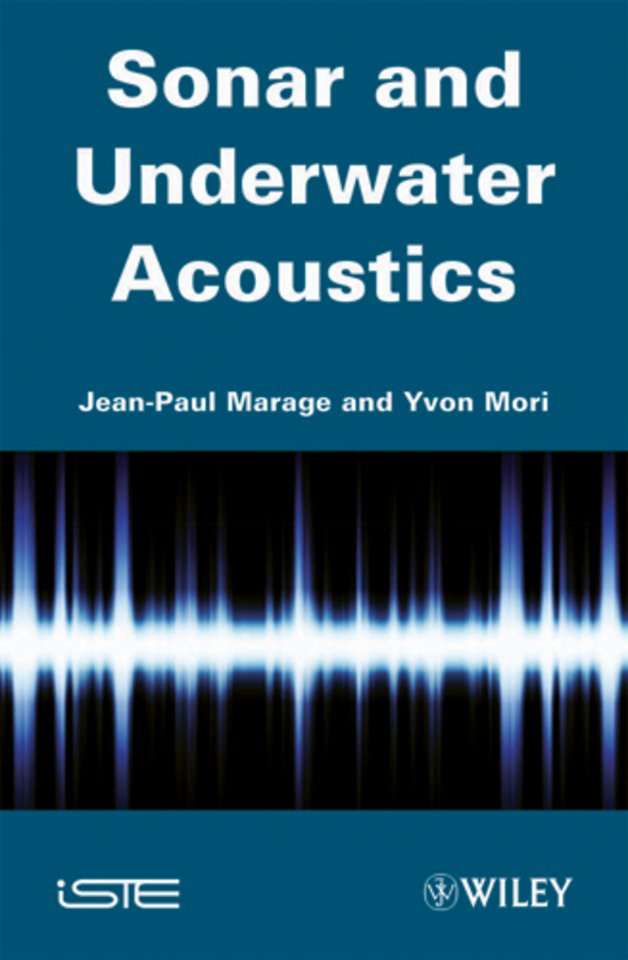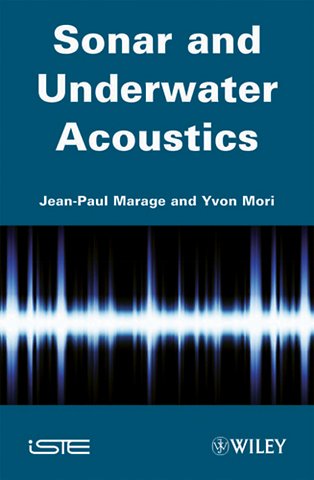Sonars and Underwater Acoustics
Samenvatting
Sonar and Underwater Acoustics brings together all the concepts necessary for designers and users of sonar systems. Unlike other books on this subject, which are often too specialized, this book is accessible to a wider audience. The first part focuses on the acoustic environment, antenna structures, and electric acoustic interface. The latter provides knowledge required to design, as well as the development and implementation of chain processes for an active sonar from the conditioning input to output processing. The reader will find a comprehensive range of all problems encountered in underwater acoustics for a sonar application, from physical phenomena governing the environment and the corresponding constraints, through to the technical definition of transducers and antennas, and the types of signal processing involved. In one section, measures in underwater acoustics are also proposed.
Specificaties
Inhoudsopgave
<p>PART 1. THE MARINE ENVIRONMENT 1</p>
<p>Part 1. Introduction 3</p>
<p>Chapter 1. Problematics 5</p>
<p>1.1. History 5</p>
<p>1.2. Underwater acoustics 7</p>
<p>1.3. Applications 9</p>
<p>1.4. Comparison with radar 10</p>
<p>1.5. Submarine detection and warfare 11</p>
<p>1.6. Submarine detection 11</p>
<p>1.7. Submarine detection: a veritable challenge 12</p>
<p>1.8. Overcoming the effects of the ocean 13</p>
<p>1.9. Sonar and information processing 16</p>
<p>Chapter 2. Sound Propagation in the Marine Environment 19</p>
<p>2.1. General points 19</p>
<p>2.2. Characteristics of the marine environment 19</p>
<p>2.3. Models used 22</p>
<p>2.4. Propagation phenomena 28</p>
<p>2.5. Application examples 33</p>
<p>Chapter 3. Noises and Reverberation 41</p>
<p>3.1. Classification of ambient noises 41</p>
<p>3.2. Analysis of noise sources 45</p>
<p>3.3. Wenz model of sea noise 51</p>
<p>3.4. Directivity of sea noise 52</p>
<p>3.5. Reverberation 55</p>
<p>Chapter 4. Radiated and Inherent Noises 65</p>
<p>4.1. Radiated noise 65</p>
<p>Chapter 5. Transmission of the Acoustic Signal: Sonar Equations 79</p>
<p>5.1. Introduction 79</p>
<p>5.2. Detection contrast and detection index 80</p>
<p>5.3. Transmission equation 81</p>
<p>5.4. Equation of passive sonar 88</p>
<p>5.5. Equation of active sonar 89</p>
<p>PART 2. ACOUSTIC–ELECTRIC INTERFACE ANTENNA STRUCTURES 93</p>
<p>Part 2. Introduction 95</p>
<p>Chapter 6. Electric–acoustic and Acoustic–electric Transformations 97</p>
<p>6.1. Transducers and hydrophones 97</p>
<p>Chapter 7. Performance and Structures of Acoustic Antennas 113</p>
<p>7.1. Antennas and radiation 113</p>
<p>7.2. Structures of sources and antennas 189</p>
<p>Chapter 8. Electronic Transducer–hydrophone Adaptation 211</p>
<p>8.1. Hydrophones 211</p>
<p>8.2. Transducers 243</p>
<p>Chapter 9. Electro–mechano–acoustic Analogies 269</p>
<p>9.1. Methods of studying transducers and hydrophones 269</p>
<p>9.2. Mechanic–electric equivalence 270</p>
<p>9.3. Electric–acoustic equivalence 275</p>
<p>9.4. Finite element method (FEM) 320</p>
<p>PART 3. PROCESSING CHAIN OF ACTIVE SONAR 323</p>
<p>Part 3. Introduction 325</p>
<p>Chapter 10. Selection Criteria in Active Processing 327</p>
<p>10.1. Selection criteria related to propagation 327</p>
<p>10.2. Selection criteria relative to noise 331</p>
<p>10.3. Selection criteria related to reverberation 332</p>
<p>10.4. Selection criteria related to emission power 333</p>
<p>10.5. Selection criteria related to the antenna 335</p>
<p>10.6. Selection criteria for the operating frequency 336</p>
<p>10.7. Selection criteria related to operational considerations 337</p>
<p>10.8. Selection criteria related to the nature of targets 337</p>
<p>Chapter 11. Processing Chain in Active Sonar 341</p>
<p>11.1. General points 341</p>
<p>11.2. Emission 341</p>
<p>11.3. Reception 345</p>
<p>Chapter 12. Basic Theoretical Notions in Active Processing 459</p>
<p>12.1. The Doppler effect 459</p>
<p>12.2. The Doppler effect in active sonar conditions 464</p>
<p>12.3. Treatment of the signal 485</p>
<p>12.4. Choice of an emission signal under active sonar conditions 503</p>
<p>Chapter 13. Measurement in Underwater Acoustics 525</p>
<p>13.1. Introduction 525</p>
<p>13.2. Wave train method 531</p>
<p>13.3. Precautions before measuring 539</p>
<p>13.4. Acoustic measurements and calibrations of transducers 542</p>
<p>13.5. Notion of uncertainty estimation and of maximum tolerated difference 551</p>
<p>13.6. Other types of measurements in underwater acoustics 553</p>
<p>APPENDICES 555</p>
<p>Appendix 1. Logarithmic Scales 557</p>
<p>Appendix 2. Equation of Sound in Fluids 563</p>
<p>Appendix 3. Piezoelectricity Fundamentals 571</p>
<p>Appendix 4. Vector Analysis ?Ï?nFundamentals 579</p>
<p>Appendix 5. Reciprocity Theorem 593</p>
<p>Appendix 6. Concrete Example of Uncertainty Estimation Based on the Reciprocity Calibration Method 601</p>
<p>Bibliography 619</p>
<p>Index 623</p>
Net verschenen
Rubrieken
- aanbestedingsrecht
- aansprakelijkheids- en verzekeringsrecht
- accountancy
- algemeen juridisch
- arbeidsrecht
- bank- en effectenrecht
- bestuursrecht
- bouwrecht
- burgerlijk recht en procesrecht
- europees-internationaal recht
- fiscaal recht
- gezondheidsrecht
- insolventierecht
- intellectuele eigendom en ict-recht
- management
- mens en maatschappij
- milieu- en omgevingsrecht
- notarieel recht
- ondernemingsrecht
- pensioenrecht
- personen- en familierecht
- sociale zekerheidsrecht
- staatsrecht
- strafrecht en criminologie
- vastgoed- en huurrecht
- vreemdelingenrecht

